The truth about the recently extinct bird species seen in Vietnam
As Dan Tri reported, the International Union for Conservation of Nature (IUCN) has just officially put the curved-billed sandpiper ( scientific name Numenius tenuirostris) on the list of extinct animals, after more than 30 years scientists have not found any existence of this bird species.
The last recorded sighting of the Curlew was on February 25, 1995, when an individual was seen in the Merja Zerga lagoon (Morocco), according to the IUCN.
However, after the article was published, many Dan Tri readers commented that they had seen this bird and that it still exists in Vietnam.
So is this really accurate?
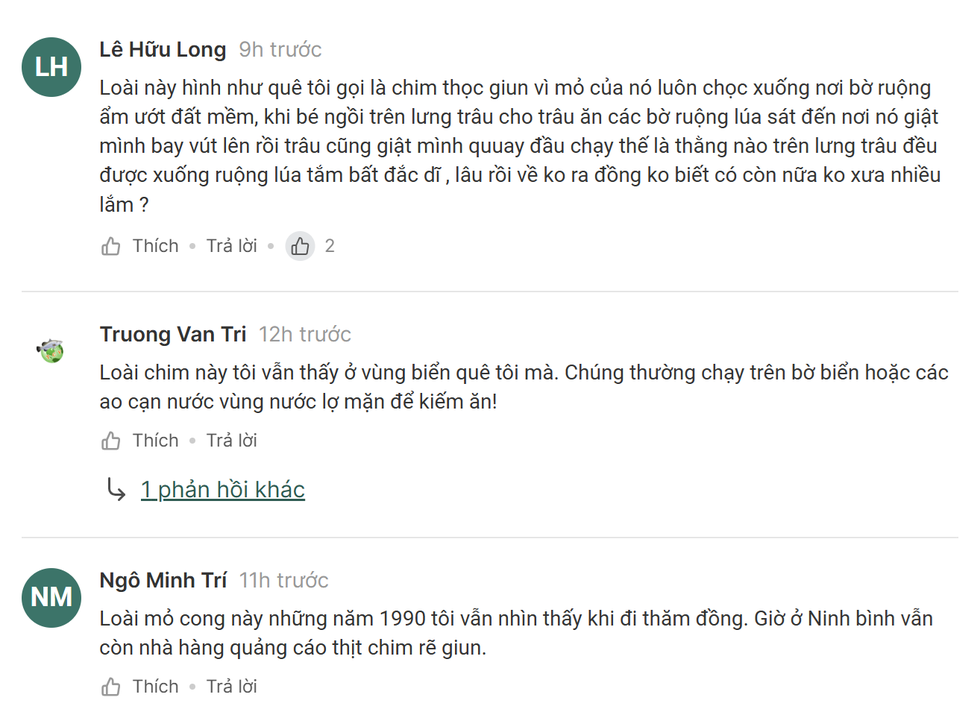
Many Dan Tri readers believe that the extinct curved-beaked bird still exists in Vietnam (Screenshot).
In fact, the hook-billed ptarmigan is not found in Vietnam or neighboring areas. It is a migratory bird, but its habitat and migration range are limited to North Africa, Europe and some Middle Eastern countries.
The hook-billed garter belongs to the family of garter birds, also known in Vietnamese as the garter or garter birds. This is a large family of wading birds, often living in swamps, mudflats or coastal areas. They have the habit of wading into the water and using their characteristic long, curved beak to search and catch prey in the mud.
Rare video footage of the hook-billed magpie, filmed in January 1995 (Video: Tini and Jacob Wijpkema).
In Vietnam, there are a number of species of woodpeckers that look similar to the woodpecker, such as the large woodpecker (scientific name Numenius arquata), the small woodpecker (Numenius phaeopus), the large woodpecker (Gallinago nemoricola), the common woodpecker (Gallinago gallinago), the Asian woodpecker (Gallinago stenura), the large web-footed woodpecker (Limnodromus semipalmatus)...
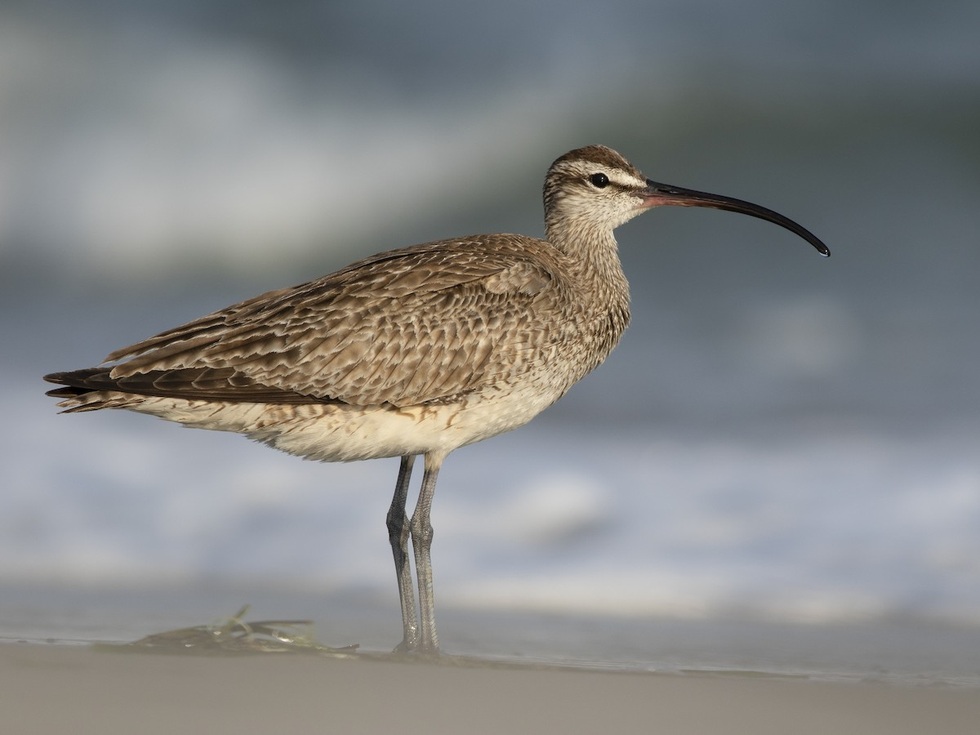
The Lesser Hook-billed Sandpiper is found in Vietnam and looks quite similar to the Lesser Hook-billed Sandpiper (Photo: CornellLab).
These birds have in common the grey-brown plumage and long, pointed beaks, adapted to digging deep into the swamp mud to find prey. It is this similarity that makes many people easily mistake them for the extinct curved-billed gargoyle.
This confusion is completely understandable, because species in the same family often have quite similar shapes, colors and sizes. For those without in-depth knowledge of biology or bird classification, accurate identification is not easy.
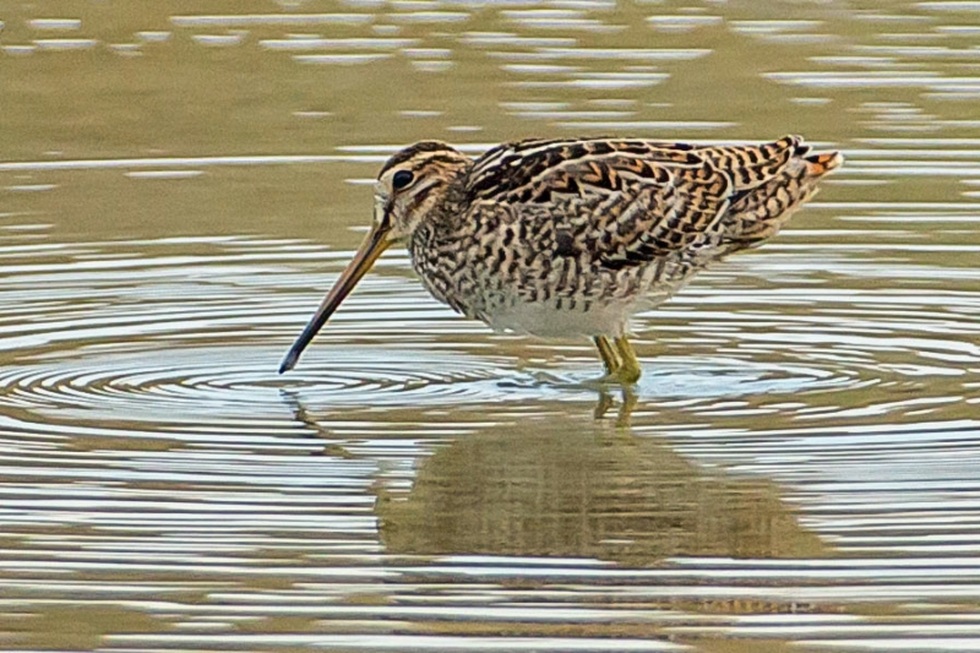
The Asian snipe can also be confused with the hook-billed sandpiper (Photo: Douwe de Boer).
When is an animal species considered extinct?
An animal species is considered extinct when no individuals of that species are known to survive anywhere in the world .
The organization responsible for assessing and classifying the conservation status of species globally is the International Union for Conservation of Nature (IUCN). Declaring an animal species extinct requires solid and comprehensive evidence.

The northern white rhinoceros is extinct in the wild, with only two individuals remaining in captivity, both female, which has stalled efforts to breed the species (Photo: Earth).
To conclude that a species is extinct, scientists must conduct extensive, thorough surveys and only conclude that a species is extinct if they find no evidence of its existence. This process includes:
- Comprehensive surveys: Searches must be made in all known and potential habitats of the species.
- Appropriate survey timing: Surveys should take place at appropriate times of day, season and year, corresponding to the life cycle and behaviour of the species. For example, searching for a nocturnal moth species would have to be done in the evening.
- After all the searching efforts, if there is no record of the species' presence for a long period of time, usually several decades, the IUCN may conclude that the species in question is extinct.
Besides the “Extinct” level, there is another extinction level called “Extinct in the Wild”, which is applied to animals that no longer exist in their natural habitat, but are still found in captive environments, such as zoos, botanical gardens, artificial reserves, etc.
Animal species classified as “Extinct in the Wild” still have a chance to recover through breeding and re-release into the wild if conditions allow.
Declaring an animal species extinct is a very serious decision and is usually only made after many years without solid evidence of the species' existence.
However, in rare cases, some species declared extinct are unexpectedly rediscovered in the wild. However, this is a very rare occurrence.
Common species of magpie in Vietnam
Large curved-billed sandpiper (Numenius arquata) is a migratory bird commonly found in tidal flats in Northern Vietnam such as Thai Binh, Nam Dinh, Ninh Binh. It has a long, downward-curved beak, a large body, light gray-brown feathers, and often forages by pecking deep into the mud.
Smaller than the Larger Curlew, it has two distinctive white stripes running through its eyes on its head. It is more common in the central coastal region, especially during spring and autumn migrations.
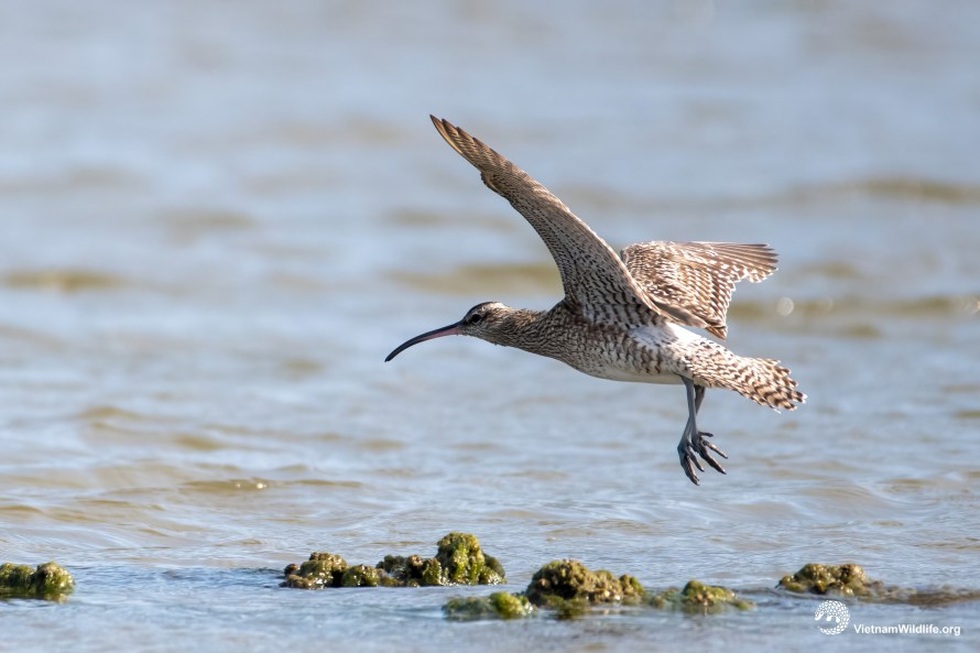
Small-billed Sandpiper photographed on the coast of Ninh Thuan (old), January 2025 (Photo source: vietnamwildlife).
Large Webbed-footed Sandpiper (Limnodromus semipalmatus) Lives in flooded mudflats and brackish marshes. Has long legs, straight bill, moves flexibly when hunting. Calls low and short, often migrates in small flocks.
Large Snipe (Gallinago nemoricola) Usually inhabits rice fields, moist grasslands or the shores of freshwater lakes. Has dark brown fur with many stripes, which helps camouflage very well. When flying, it makes a short, quick "squeak" sound.
Asian Snipe (Gallinago stenura) Widely distributed throughout the country, especially in the Red River and Mekong River Deltas. Long, thin bill; small body, white streaks on the wings. This species is easily confused with the Snipe due to its similar appearance.
The above species all belong to the group of shorebirds, playing an important role in the wetland ecosystem, helping to balance insect populations and maintain biodiversity in Vietnam's wetlands.
Source: https://dantri.com.vn/khoa-hoc/thuc-hu-viec-loai-chim-tuyet-chung-duoc-cho-la-xuat-hien-tai-viet-nam-20251015023605524.htm













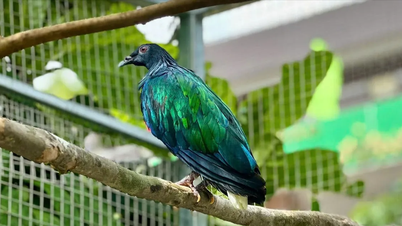






















![[Photo] Ready for the 2025 Fall Fair](https://vphoto.vietnam.vn/thumb/1200x675/vietnam/resource/IMAGE/2025/10/14/1760456672454_ndo_br_chi-9796-jpg.webp)









































![[Photo] General Secretary To Lam chairs the meeting of the Central Steering Committee on science, technology development, innovation and digital transformation](https://vphoto.vietnam.vn/thumb/402x226/vietnam/resource/IMAGE/2025/10/15/1760500443782_anh-man-hinh-2025-10-15-luc-10-52-47.png)



































Comment (0)